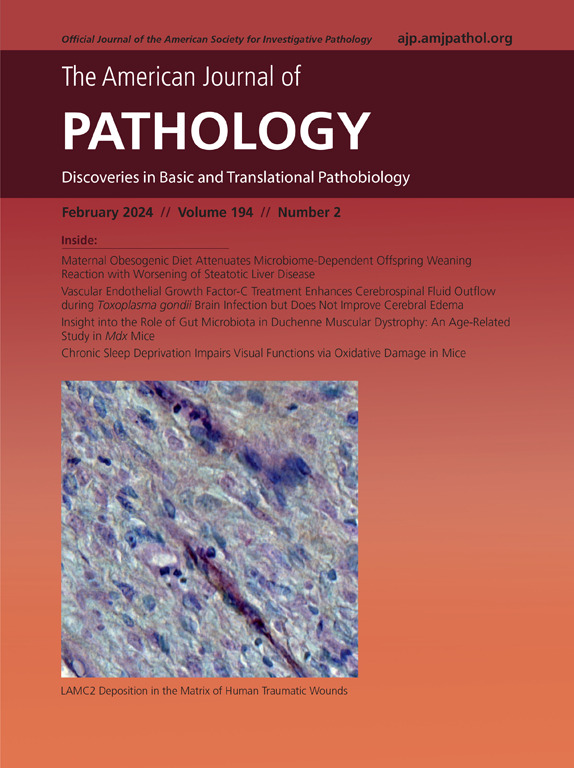Ascending Vaginal Infection in Mice Induces Preterm Birth and Neonatal Morbidity
IF 3.6
2区 医学
Q1 PATHOLOGY
引用次数: 0
Abstract
Preterm birth (PTB; delivery before 37 weeks), the main cause of neonatal death worldwide, can lead to adverse neurodevelopmental outcomes, as well as lung and gut pathology. PTB can be associated with ascending vaginal infection. Ascending Escherichia coli infection in pregnant mice induces PTB and reduces pup survival. The current study demonstrated that this model recapitulates the pathology observed in human preterm neonates (namely, neuroinflammation, lung injury, and gut inflammation). In neonatal brains, there is widespread cell death, microglial activation, astrogliosis, and reduced neuronal density. The utility of this model was validated by assessing the efficacy of maternal cervical gene therapy with an adeno-associated viral vector containing human β defensin 3. This improved pup survival and reduced tumor necrosis factor alpha mRNA expression in perinatal pup brains exposed to E. coli. This model provides a unique opportunity to evaluate the therapeutic benefit of preterm labor interventions on perinatal pathology.
小鼠阴道上行感染可诱发早产和新生儿发病。
早产;交付
本文章由计算机程序翻译,如有差异,请以英文原文为准。
求助全文
约1分钟内获得全文
求助全文
来源期刊
CiteScore
11.40
自引率
0.00%
发文量
178
审稿时长
30 days
期刊介绍:
The American Journal of Pathology, official journal of the American Society for Investigative Pathology, published by Elsevier, Inc., seeks high-quality original research reports, reviews, and commentaries related to the molecular and cellular basis of disease. The editors will consider basic, translational, and clinical investigations that directly address mechanisms of pathogenesis or provide a foundation for future mechanistic inquiries. Examples of such foundational investigations include data mining, identification of biomarkers, molecular pathology, and discovery research. Foundational studies that incorporate deep learning and artificial intelligence are also welcome. High priority is given to studies of human disease and relevant experimental models using molecular, cellular, and organismal approaches.

 求助内容:
求助内容: 应助结果提醒方式:
应助结果提醒方式:


